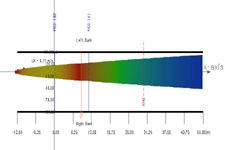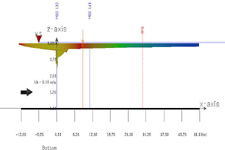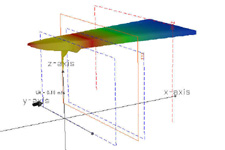Density currents are buoyancy driven far-field flows that are defined by transverse horizontal
spreading while being advected downstream by an ambient current.
As illustrated by the image on the right, these spreading processes can intrude into the ambient flow, forming a buoyant upstream
wedge and stagnation point.
These flows are caused by the density difference of the mixed flow relative to the ambient density.
Density currents are preceded by turbulent jet mixing in the near-field and are
followed by passive diffusion in the far-field.
Density currents may or may not form upstream intrusions, depending upon the crossflow magnitude and internal buoyancy at boundary interaction.
Surface Buoyant Jet/Density Current Mixing
Positively buoyant jets discharged horizontally along the water surface from a laterally entering channel or pipe as shown in the right image bear some similarities to the more classical submerged buoyant jet. For a relatively short initial distance, the effluent behaves like a momentum jet spreading both laterally and vertically due to turbulent mixing.
After this stage, vertical entrainment becomes inhibited due to buoyant damping of the turbulent motions, and the jet experiences strong lateral spreading. During stagnant ambient conditions, ultimately a reasonably thin layer may be formed at the surface of the receiving water; that layer can undergo the transient density current buoyant spreading motions (Image a).
In the presence of ambient crossflow, buoyant surface jets may exhibit any one of following three types of flow features: They may form a weakly deflected jet that does not interact with the shoreline (Image b, above). When the crossflow is strong, they may attach to the downstream boundary forming a shore-hugging plume (Image c). When a high discharge buoyancy flux combines with a weak crossflow, the buoyant spreading effects can be so strong that an upstream intruding plume is formed that also stays close to the shoreline (Image d).



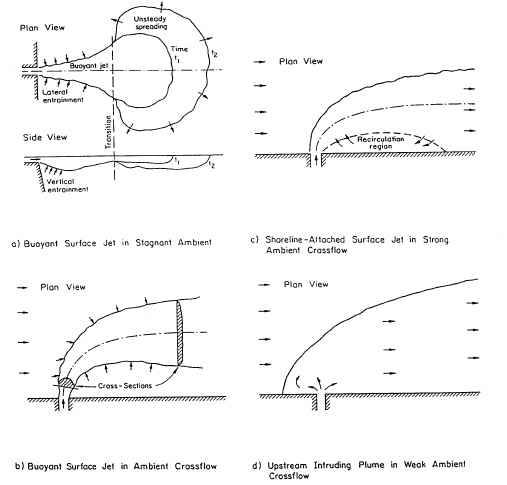
.jpg)
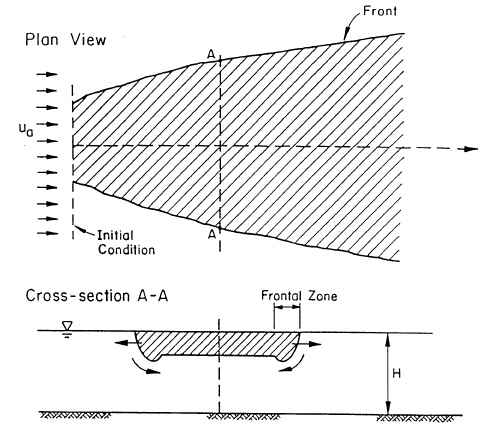
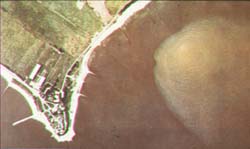
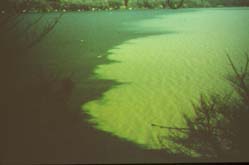
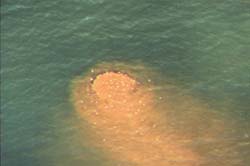
.jpg)

